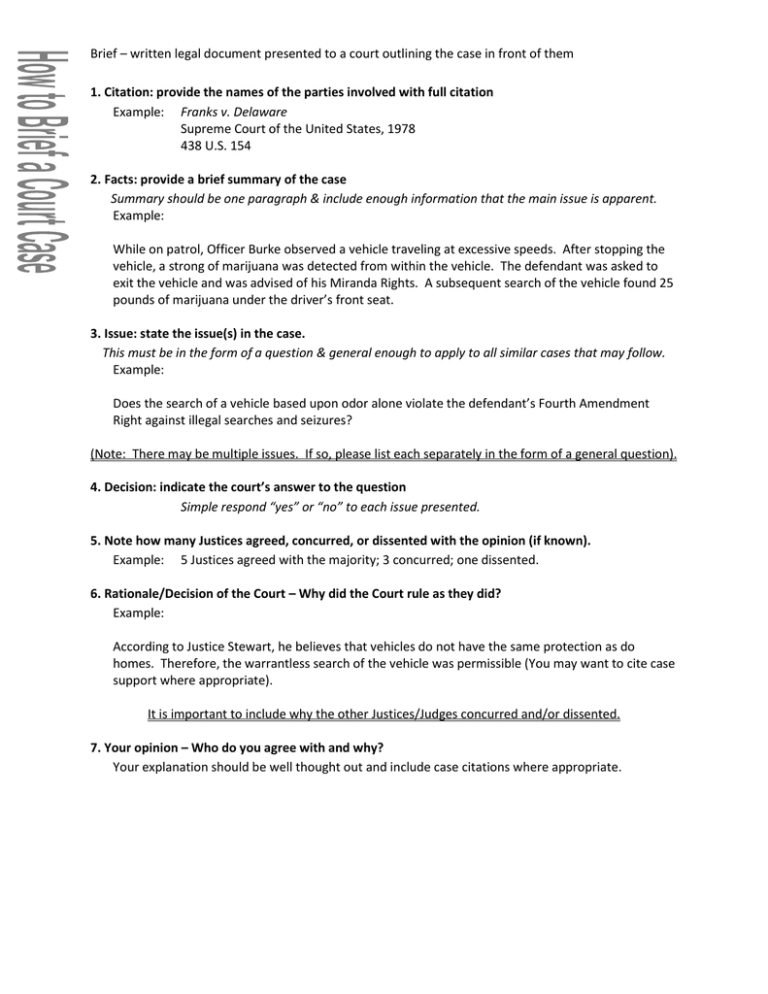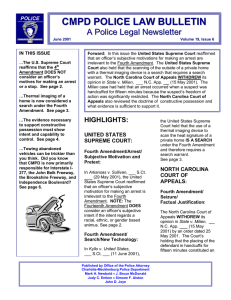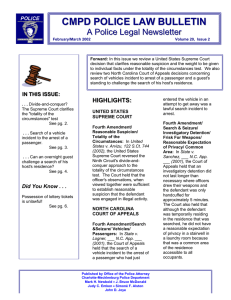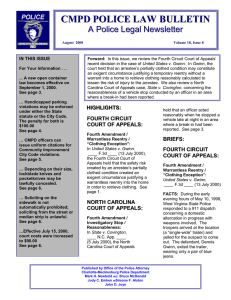How to Brief a Court Case: A Step-by-Step Guide
advertisement

Brief – written legal document presented to a court outlining the case in front of them 1. Citation: provide the names of the parties involved with full citation Example: Franks v. Delaware Supreme Court of the United States, 1978 438 U.S. 154 2. Facts: provide a brief summary of the case Summary should be one paragraph & include enough information that the main issue is apparent. Example: While on patrol, Officer Burke observed a vehicle traveling at excessive speeds. After stopping the vehicle, a strong of marijuana was detected from within the vehicle. The defendant was asked to exit the vehicle and was advised of his Miranda Rights. A subsequent search of the vehicle found 25 pounds of marijuana under the driver’s front seat. 3. Issue: state the issue(s) in the case. This must be in the form of a question & general enough to apply to all similar cases that may follow. Example: Does the search of a vehicle based upon odor alone violate the defendant’s Fourth Amendment Right against illegal searches and seizures? (Note: There may be multiple issues. If so, please list each separately in the form of a general question). 4. Decision: indicate the court’s answer to the question Simple respond “yes” or “no” to each issue presented. 5. Note how many Justices agreed, concurred, or dissented with the opinion (if known). Example: 5 Justices agreed with the majority; 3 concurred; one dissented. 6. Rationale/Decision of the Court – Why did the Court rule as they did? Example: According to Justice Stewart, he believes that vehicles do not have the same protection as do homes. Therefore, the warrantless search of the vehicle was permissible (You may want to cite case support where appropriate). It is important to include why the other Justices/Judges concurred and/or dissented. 7. Your opinion – Who do you agree with and why? Your explanation should be well thought out and include case citations where appropriate.










